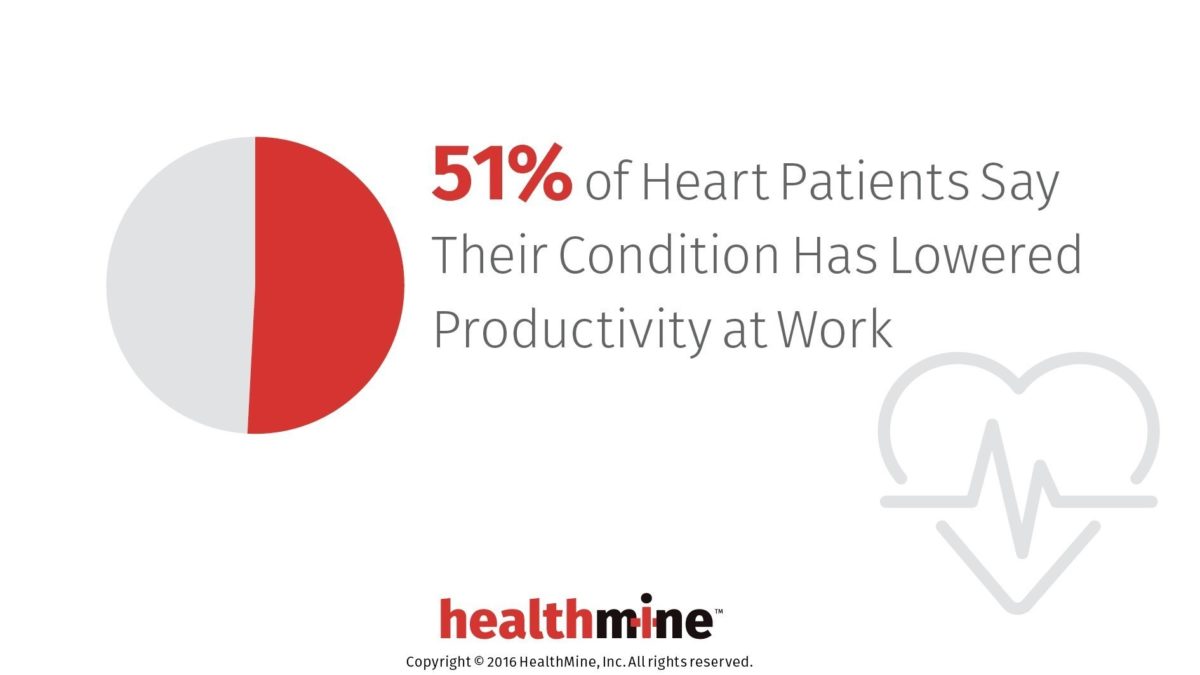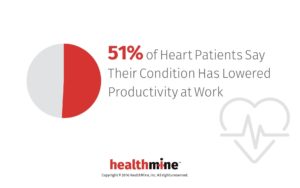
Source: HealthMine 2016 (PRNewsFoto/HealthMine)
According to a 2016 HealthMine survey of 501 consumers with known heart disease and/or risk, 61 percent say they have their condition “completely under control.” However, of those employed, 51 percent say their condition lowers their productivity at work. Further, 46 percent have lost measurable work days due to their heart condition or risk. Cardiovascular disease costs America more than $320 billion in annual healthcare costs and lost productivity, according to the Centers for Disease Control and Prevention (CDC) Foundation. Annually, about one in every six U.S. healthcare dollars is spent on cardiovascular disease. The HealthMine survey was fielded in January-February 2016.
Lost productivity
According to HealthMine’s survey, one third (33 percent) of workers with heart disease have lost three or more work days per year because of their condition, and 16 percent have lost more than 6 working days. What’s more, 19 percent of workers with heart disease say their condition lowers their productivity a lot; 32 percent report that their condition lowers their productivity somewhat.
Hospital & urgent care visits increase
Cardiovascular disease causes one out of every three deaths in America. Twenty percent of survey respondents report having a hospital stay within the past year resulting from their heart problem. One quarter (25 percent) had to visit the emergency room or urgent care at least once because of their condition. The CDC Foundation predicts that by 2030, annual direct medical costs associated with cardiovascular diseases are projected to rise to more than $818 billion, while lost productivity costs could exceed $275 billion.
Bryce Williams, CEO and President of HealthMine said, “Despite the large toll to Americans and health plan sponsors, heart disease is largely preventable.” He continued, “We can help people manage their medical conditions and make necessary lifestyle changes. The key is through personal clinical engagement, which makes health data meaningful to a consumer. And understanding health data in relation to disease risk is the first line of defense in preventing chronic illness.”

